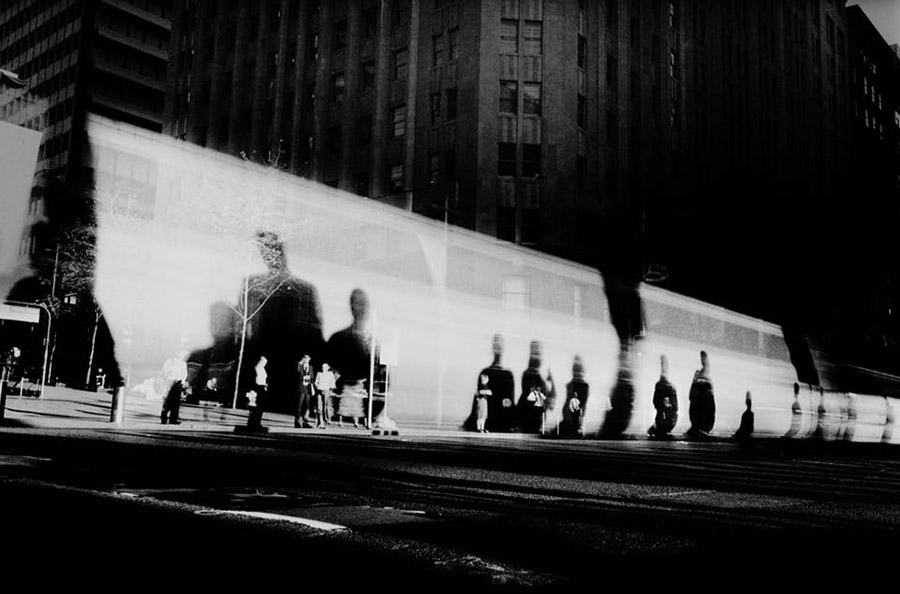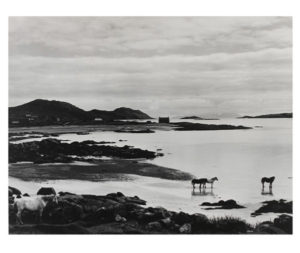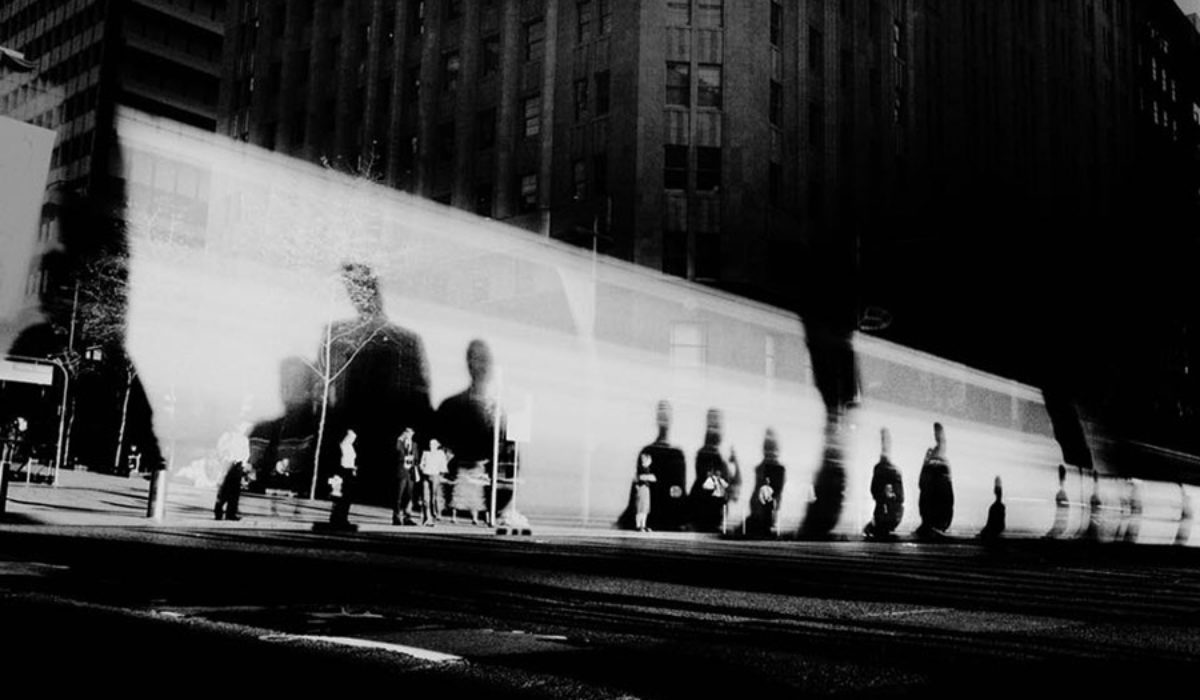Putting In the Work —
While I tend to think of “pushing photography further” as mostly involving a combination of creative photography and Photoshop, there is also the very real factor of simply pushing ourselves further.
 Working harder. Pursuing a theme or project longer.
Working harder. Pursuing a theme or project longer.
This image presented here is one of my favorite photos of all time, by the brilliant Australian photographer Trent Parke. But this wasn’t a stray photo that just happened to turn out great. Capturing this took trying for the shot repeatedly, traveling on this bus 3 or 4 times a week for a full month before he got it right.
“I shot a hundred rolls of film, but once I’d got that image I just couldn’t get anywhere near it again. That’s always a good sign: you know you’ve got something special.”
– Trent Parke
Something to not only think about but marvel at.
And it’s the challenge of remaining AWAKE, I think.
Because here’s the thing: “The right place at the right time …” One immaculate shutter click. One miracle of inspiration. — It’s all a myth.
I think it’s important to remember that while we often associate famous artists and photographers with certain “greatest hits” images they’ve made, the reason those images came about had less to do with serendipity or chance than it had to do with diligent persistence.
The best works all arose from WORK. Work across time. Often of the same subject or at the same location or in the same style … visited and revisited, explored again and again.
Hundreds and hundreds of canvases.
Back in the day — hundreds of rolls of film.
When you look at the contact sheets of great photographers, you find that they often made a dozen or more images when something caught their fancy … they worked the scene, exposure after exposure, and only afterward did the ONE image among the many emerge as being the one everyone comes to remember.
Or think of the great painters and the sheer volume of their output. You find yourself entranced by the grandeur of a Monet … and then learn that he painted not just one famous water lily pond but rather lily pond after lily pond after lily pond after lily pond. And it was only through all of that work (all of that repetition, all of that creative exploration) that the ONE iconic painting emerged for which he became so famous.
Which brings me to the assignment I have for you.
What I want you to do is pick ONE THING to explore creatively. Either as a photographic or as a photo-artistic theme, subject, or location …
And I want you to REALLY explore it. As in, at least 30 photos or at least 15 Photoshop compositions. (Your choice.)
But here’s the thing: While it needn’t be complex or complicated, you do need to work each one, intent on making it both technically excellent and creatively fresh in some way.
The first two, three, four will be easy. The next few not so easy. And after that … it’s going to get hard. (Indeed, EXPECT it to get hard. If it’s too easy, you’re not really trying.)
The point of this entire exercise is to remain creatively alert (remain AWAKE) through the entire project, pushing yourself beyond the easy images early on. You need to get beyond the obvious, the familiar, the expected.
You can execute this over a span of a couple weeks or a full month if you like. But plan to take some time on it.
And since you’ll be spending some time on it, make sure to pick something that excites you or moves you in some way. Get creative. Get inspired. Come up with an idea and spend half an hour writing down some initial ideas. See if it’s still exciting to you. (Or, if you’re lucky, even more exciting, the more you think about what you could do with it.)
What I want to see is:
1.) Whether you can do it. (Do you have the staying power to pursue a project of this scope?)
2.) How creative you can get with it. (How creative will you get after your initial familiar ideas run out?)
3.) And which of the 30 photos (or 15 compositions) turn out best (will it be the early, easy ones … or will your best work turn up only well after it turns difficult and you’re having to push yourself)?
Sit down and think through this a bit in your journal. See what you come up with. Then let’s plan on revisiting this in a few weeks …
You up for the challenge?
– Sebastian
 Postscript: Another set of images you should look up are those of photographer Paul Strand. He and his wife spent three months in 1954 on an island off the west coast of Scotland. In that time he created lord knows how many images, exploring one idea after another, and going deep with each of them … until eventually he assembled a body of images from the project and published them in what became a classic of modern photography: “Tir A’Mhurain.”
Postscript: Another set of images you should look up are those of photographer Paul Strand. He and his wife spent three months in 1954 on an island off the west coast of Scotland. In that time he created lord knows how many images, exploring one idea after another, and going deep with each of them … until eventually he assembled a body of images from the project and published them in what became a classic of modern photography: “Tir A’Mhurain.”
The most important lesson I drew from seeing this book was that ONLY A FEW of the images really struck me full force. But it took Paul Strand working that project for three months (and a whole lot of editing and selecting after the fact) to create a collection worth something. And even then (even then!) only a few of the images would be considered “greatest hits.” Think about that. If that’s the case for a photographer as great as Paul Strand, how quick should you or I be to create a single image and move on? Moral of the story: Find something that matters to you (or something that excites you), and then WORK it. And work it. And work it. Only through putting in the time will you create ENOUGH work for a few great images to emerge in the end. And a few is all you need.

